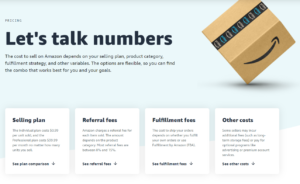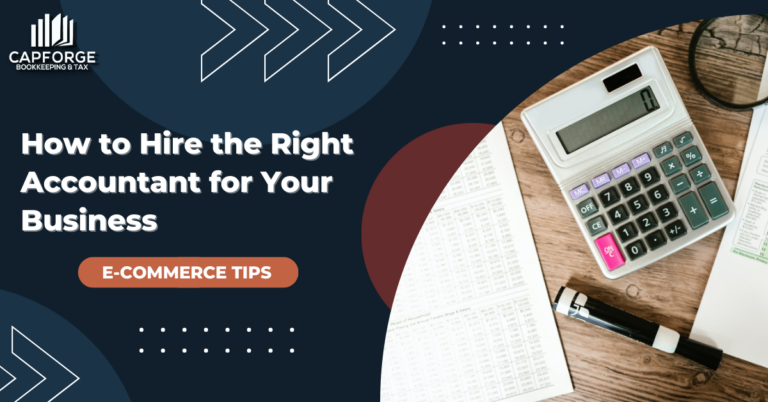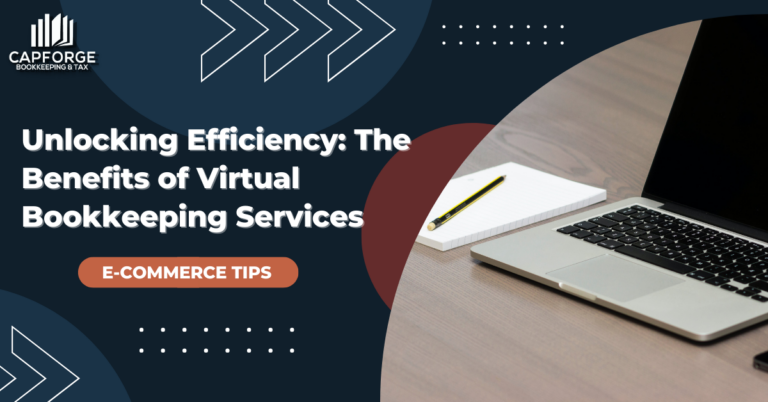Effective Method to Avoid Costly Bookkeeping Mistakes for Amazon Sellers
If we offered you $500 for reading this article, you would read it, yes?
Well then you better read it, because while we’re not offering to pay you directly for your time, we are promising that the information contained within this article will save you hundreds (if not thousands!) of dollars.
All you have to do is invest the next 15 minutes into learning about common bookkeeping mistakes and how you can avoid them. Simple enough, right? You’d think so, but many Amazon sellers are so intimidated by anything having to do with math or accounting that they can’t even be bothered to learn the basics—and they end up paying for it in the end.
Don’t let this be you. A bookkeeping mistake can cost you in more ways than one, as we’ll explain in this article. Educating yourself now will pay dividends later.
About Amazon Bookkeeping
We’ll keep this part brief, as you’re probably anxious to get into the nitty gritty of how to dodge common bookkeeping mistakes. But before we do that, we find it worthwhile to quickly go over what Amazon bookkeeping is, as there are a lot of misconceptions about what it entails.
In a nutshell, Amazon bookkeeping is the systematic recording and organizing of your company’s financial activities. Every sale, return, and expense is documented in your ledger, which contains a list of all the transactions you’ve ever made.
You’ll often hear people use the term “bookkeeping” interchangeably with “accounting,” but these are actually two different things.
Bookkeeping is a subset of accounting, which encompasses a much broader overview of fiscal management. While bookkeeping involves logging all of your company’s financial activities, accounting deals with the analysis and interpretation of such data. In that sense, accounting is a more advanced form of bookkeeping that can be used to make adjustments to your business model. At CapForge, we primarily focus on small business bookkeeping, but we also have Certified Public Accountants (CPAs) on staff that can assist with additional needs.
Method to Avoid Costly Bookkeeping Mistakes for Amazon Sellers
Now that you have a basic understanding of what Amazon bookkeeping is, let’s look at some common bookkeeping mistakes and how you can avoid making them.
Focusing on Sales Instead of Profit
“Last year, I did $1 million in sales!”
The above statement may sound impressive, but it can actually be a little misleading. Allow us to explain.
Just because you did a million in sales, doesn’t mean you have a million dollars in the bank. To calculate how much you actually pocketed, you’ll need to look at your profits.
Let’s say, for example, that you’re selling microwaves for $50. After you subtract all of your expenses—including platform fees and your Cost of Goods Sold (COGS)—you end up with a net profit of $5 per microwave. That’s a net profit margin of 10%.
If you did $1 million in microwave sales, then your total net profit for the year was $100,000.
Wondering what a good profit margin is? The answer is that it largely depends on the industry. With that being said, for web-based retailers, generally speaking a 5% net profit margin is considered low, 10% is considered average, and 20% is deemed high. If you find yourself on the low end of that spectrum, check out this Shopify blog post, Look Past Revenue: 6 Ways to Increase Your Profit Margins.
Failing to Account for Seller Fees
When you’re calculating your Cost of Goods Sold (COGS), one thing you’ll need to keep a careful eye on is your seller fees.
Seller fees are one of those things that can easily sneak up on ya, as there are various charges you’ll incur for using Amazon’s platform. There are four main categories of seller fees. They are: Selling Plan, Referral Fees, Fulfillment Fees, and Other Costs. Let’s look at each one in more detail.
Selling Plan
This is a base-level charge that every Amazon seller is subject to, no matter their sales volume. With that being said, there are two different selling plans to choose from: individual or professional.
The Individual Selling Plan costs $0.99 per unit sold. It’s best for those who are still deciding what to sell, move fewer than 40 units a month, and don’t plan to advertise or use advanced selling tools.
The Professional Selling Plan costs $39.99 per month for an unlimited amount of units sold. This plan is best for those who move more than 40 units a month, want to sell in restricted categories, plan to advertise their products, would like to qualify for top placement on product detail pages, and need access to advanced selling tools like APIs and reports.
Referral Fees
On top of the Selling Plan, you’ll also have to pay referral fees for each item you sell.
The amount you’ll pay in referral fees will depend on the category you sell in. Generally speaking though, you can expect to pay a minimum of $0.30 per item, but more often than not you’ll pay a percentage of your total sales price. Some categories, like Amazon device accessories, come with a referral fee as high as 45%, so make sure you visit Amazon’s pricing page before you decide which products to sell.
Fulfillment Fees
Fulfillment fees vary depending on whether you plan to ship items yourself or use Fulfillment by Amazon (FBA).
Aside from that, there are multiple other factors that will determine how much you pay in fulfillment fees, such as item type, weight, size dimension, and delivery speed. Again, we encourage you to visit Amazon’s pricing page for an exact estimate.
Other Costs
But wait… there’s more!
You are subject to additional charges for FBA storage, rental books, high-volume listing, and refund administration.
Optional amenities that you may want to consider paying extra for include advertising, premium account services, inventory placement service, and the Amazon-partnered carrier program.
If it’s starting to feel like you’re being nickeled and dimed for every little thing, well, welcome to the life of an Amazon seller 😂
Do-It-Yourself Accounting
A misguided person once said, “If you want something done right, you have to do it yourself.”
Nothing could be further from the truth when it comes to accounting.
In fact, unless you have a degree or experience in accounting, we strongly advise you against the DIY approach. The reason is simple: accounting is a very complex field that takes a lot of time, experience, and knowledge to master. Without the proper time, experience, and knowledge, you’re bound to make mistakes. And those mistakes can come with a hefty price tag, including penalties from the IRS.
It’s not worth putting your business at stake, especially when there are a plethora of outsourced accounting firms that offer monthly bookkeeping services at an affordable rate. At CapForge, for example, we have flat-rate monthly bookkeeping plans starting at $199/mo. Occasionally, we’ll even charge less than that for ultra small businesses with minimal needs. Contact us for a custom quote.
Expensing Inventory
There are pros and cons when it comes to expensing inventory on your tax returns. While some CPAs are fine with it and make the case that it’s allowed, there are others who are adamant that it should not and cannot be expensed and doing so is a red flag for an audit you cannot win. We’ll leave that subject for another article, but when it comes to the bookkeeping, we definitely think you should not be expensing it.
The problem with doing that—meaning counting the entire cost of the inventory at the time you pay for it rather than at the time you sell it—is that it is going to completely screw up your books in terms of telling you whether you are making a profit at all. Books done this way make it impossible to tell in any given month how the business is actually performing.
The right way to do it is record inventory purchases as an asset and then expense only the value of the products you actually ship in any given month as an expense. That way you can really assess the profitability of each month’s activity.
Not Identifying Profit Centers
There’s two ways to look at profit: by summary and by transaction. Most Amazon sellers prefer the former, as a summary is easier and gives you a big picture view of how your business is performing as a whole.
However, it can be well worth your time and money to evaluate your profits on a transactional level. Assessing the performance of each individual product will allow you to identify profit centers, such as specific channels or items, and strategize on how to optimize them.
We often find that the more SKUs you sell the more likely it is that you have some that are underperforming or even flat out losing money! Obviously you never want to sell a product at a loss but the only way to stay on top of this is to make sure you are monitoring your profit by SKU, not just overall.
Procrastinating on Bookkeeping
What do bookkeeping and dirty dishes have in common? Both are seen as a chore.
The problem with chores is that people tend to put them off because they don’t like doing them. But here’s the thing: no matter how long you let the dirty dishes pile up, you’ll eventually have to do them. The same is true of bookkeeping.
If you’ve already fallen behind and are overwhelmed by the amount of work that has accumulated, the good news is you can always hire a firm like ours to catch-up your books in full. The bad news is that it comes at a price—and we’re not just talking the cost of the actual project.
Oftentimes what we see with catch-up projects is that a product is actually costing the client money, and they never noticed it before because they weren’t actively monitoring their financials. This can easily happen if you are selling numerous products—the majority of which are performing well—except for one or two.
The profits generated by the products that are performing well can “drown out” the cost of those that are selling at a loss. This is one reason why you should never judge the performance of your business as a whole based on the amount of money you have in the bank, as this metric alone can be deceptive.
Another risk you are taking when you fall behind on bookkeeping is letting mistakes go unnoticed. For example, let’s say your supplier accidentally double-charged you for an order you placed six months ago. You’re far less likely to get reimbursed now that six months have gone by than if you had pointed out the billing error when it first occurred.
To prevent this from happening to you, be honest with yourself: Are you realistically willing and able to do your own bookkeeping on a monthly basis? Because if not, you’re better off hiring a professional.
Neglecting Sales Taxes
Many sellers operate under the assumption that Amazon is automatically withholding the correct amount of sales tax. But that’s not always the case.
Within the past couple of years, most states have enacted laws that place the onus of e-commerce tax collection on behalf of the marketplace facilitator, which in this case is Amazon. But here’s the kicker: not all states have these laws.
“Marketplace Facilitator legislation is a set of laws that shifts the sales tax collection and remittance obligations from a third party seller to the marketplace facilitator,” an official statement posted by Amazon reads. “As the marketplace facilitator, Amazon will now be responsible to calculate, collect, remit, and refund state sales tax on sales sold by third party sellers for transactions destined to states where Marketplace Facilitator and/or Marketplace collection legislation is enacted. In certain states, local taxes are not included within Marketplace Facilitator Legislation; Amazon is not responsible for those taxes.”
As of the writing of this article, only three states—Florida, Kansas, and Missouri—do not have Marketplace Facilitator legislation. To ensure you are withholding the correct amount of tax, make sure you familiarize yourself with local and state tax laws. Sales Tax 101 for Online Sellers, written by TurboTax, is a good place to start. But given how frequently tax laws change, it’s always a good idea to consult with a tax professional just in case.
That’s still not the end of it, however. If you sell on other platforms as well as Amazon, such as Shopify or your own website, you have to consider those sales as well and what sales tax may be owed where on the sales from those channels. It can all be a bit overwhelming! If you have questions, we can help sort it out for you to keep you out of trouble and avoid paying out of pocket for other people’s taxes!
Conclusion
In our experience, most of these mistakes are made because sellers treat bookkeeping like an afterthought. It isn’t until after they decide to apply for a business loan that they realize they need a balance sheet, a cash flow statement, along with a profit and loss statement. It isn’t until after they begin filing taxes that they discover that they haven’t been withholding the correct amount. And it isn’t until after they’ve lost a bunch of money that they uncover that they’re operating at a loss.
The lesson to be learned is that bookkeeping is essential to running a business. If you don’t manage it properly from the very beginning, it will become a huge headache down the road.









